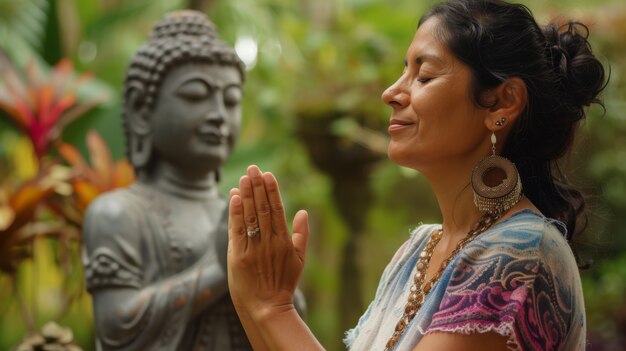

I’d like to share a simple, four-step approach to cultivating jhāna, which can make accessing the first jhāna easier with practice. Since advancing to the remaining three jhānas happens through the first, improving your access to this state can be crucial for deeper meditation experiences. But first, let’s clarify what jhāna is.
In meditation, achieving jhāna means reaching a state of deep, effortless absorption in your sensory experience, free from distracting thoughts. This calm and stable state brings happiness and a sense of vitality, which can often make meditation sessions feel too short as you want to continue.
Jhāna, or “meditation” in Pali (Sanskrit: dhyāna), occurs when five hindrances are dispelled: ill will, sense desire, restlessness and anxiety, sloth and torpor, and doubt. Without these hindrances, the mind becomes naturally joyful and focused, leading you into jhāna.
There are four levels of jhāna, each deeper and more fulfilling than the last, forming what is known as sammā samādhi or right concentration in the Eightfold Path. While some Buddhist schools and teachers downplay or dismiss the jhānas, the earliest Buddhist teachings emphasize their importance for enlightenment. The Buddha himself attained enlightenment through realizing that jhāna was essential.
To deepen your experience of jhāna, consider this structured approach:
1. Calm the Mind: Begin by softening your eyes, relaxing the muscles around them, and letting your focus be gentle. This relaxation extends your awareness to your entire visual field. By using “soft eyes,” your mind calms down, reducing unnecessary thinking and promoting a more open and relaxed awareness.
2. Use Thought to Quiet Thought: Introduce thinking that helps calm the mind. For instance, you can repeat phrases like “releasing, resting, revealing” to direct your focus back to your immediate experience and maintain calmness.
3. Appreciate Aliveness and Joy: Be mindful of pleasant sensations and joy that arise. Smile, be kind, and maintain an appreciative attitude towards your experience. Recognize that your present moment is miraculous and let joy emerge naturally without forcing it.
4. Find a Lightly Held Focal Point: To integrate your experience of calmness, aliveness, and joy, find a lightly held focal point, such as the sensation at the rims of your nostrils. This focal point should tie together your bodily sensations, calm mind, and joyful disposition, without demanding rigid concentration.
By fostering these conditions, you allow jhāna to emerge naturally. Remember, the goal is not to force jhāna but to create an environment where it can arise on its own. Regularly check in on your balance of calmness, aliveness, and joy, and adjust your focus to cultivate these qualities in harmony.
When you stabilize these three foundations (calmness, aliveness, and joy), jhāna becomes a more persistent experience. Each foundation supports the others in a positive feedback loop, making the state sustainable for longer periods.
Finally, don’t hold onto the idea of “attaining” jhāna. Focus on being present with each moment as it unfolds, and let the depth of your meditation develop naturally. By caring for the present moment, you pave the way for deeper meditative experiences.